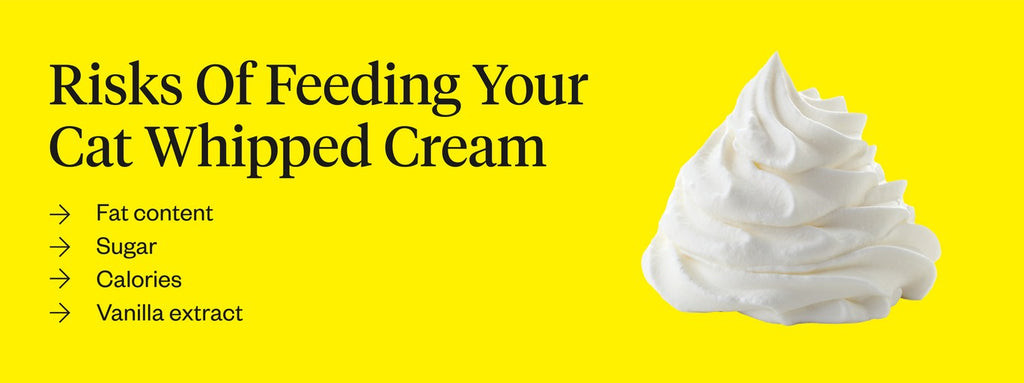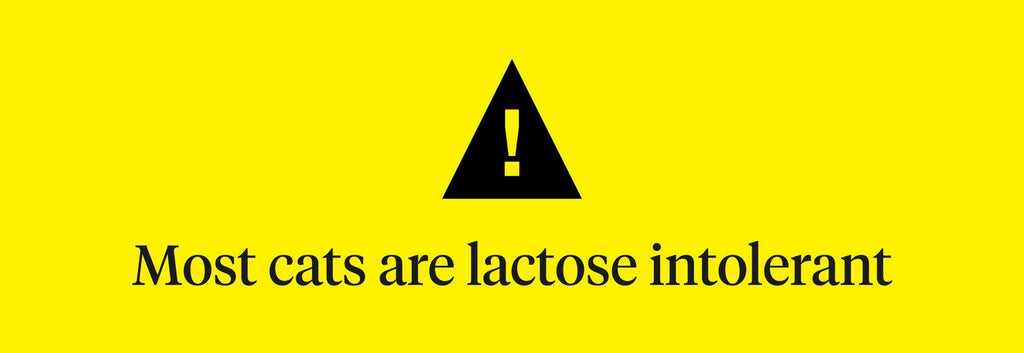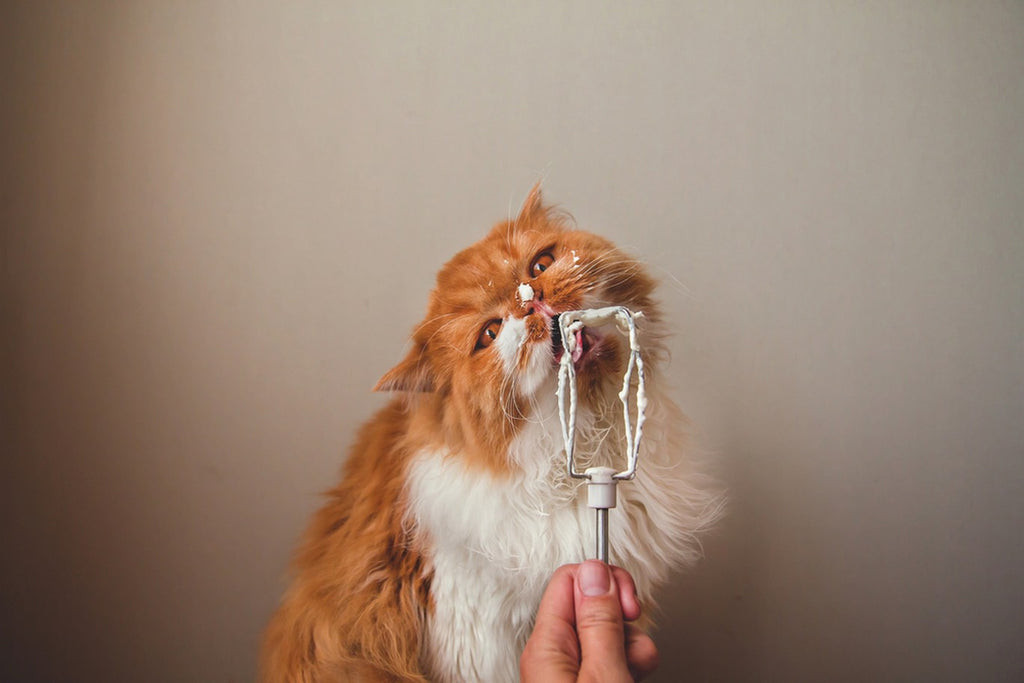If you’re a cat owner who enjoys the occasional dollop of whipped cream on your dessert or in your coffee, you might have noticed your feline friend showing some interest. Perhaps you’ve even wondered, “Can Cats Eat Whipped Cream?” especially after seeing dogs happily lap up Puppuccinos at coffee shops. While it might seem like a harmless treat to share with your kitty, it’s essential to understand the potential implications of feeding whipped cream to cats.
Whipped cream, in small amounts, is generally considered non-toxic to cats. However, it’s far from being a healthy or beneficial treat for them. As a responsible cat owner, it’s crucial to be aware of the nutritional content and potential risks associated with whipped cream before offering it to your feline companion. This article will delve into the question, “Can cats have whipped cream?”, exploring its composition, the dangers it poses, and healthier alternatives you can offer your beloved cat.
What’s Really in Whipped Cream? Understanding the Ingredients
To truly understand whether whipped cream is suitable for cats, let’s break down what this fluffy topping is typically made of. Traditional whipped cream starts with heavy cream, which is then whipped to incorporate air, creating its light and airy texture. However, commercially available whipped cream often includes a range of additional ingredients to enhance flavor, stability, and shelf life.
For instance, a popular brand like Reddi-Wip contains not only heavy cream but also water, sugar, corn syrup, nonfat milk, and various artificial flavors and stabilizers. These added components are where many of the concerns arise when considering feeding whipped cream to cats.
 Risks of feeding your cat whipped cream
Risks of feeding your cat whipped cream
Alt text: Graphic illustrating potential risks of feeding whipped cream to cats, including digestive issues, weight gain, and dental problems.
While the creamy texture might be appealing to some cats, the ingredients list reveals why whipped cream is not an ideal treat for them. Let’s examine the specific components that pose potential dangers to feline health:
Lactose Intolerance: The Dairy Dilemma for Cats
It’s a common misconception that cats and milk go hand in hand, often perpetuated by media portrayals. However, the reality is that the majority of adult cats are lactose intolerant. This is because as cats mature past kittenhood, they often lose the enzyme lactase, which is necessary to digest lactose, the sugar found in milk and dairy products like cream.
Consuming lactose can lead to gastrointestinal (GI) upset in lactose-intolerant cats. This can manifest as various uncomfortable symptoms, including:
- Diarrhea
- Vomiting
- Gas
- Constipation
- Abdominal pain
Since whipped cream is a dairy-based product, it contains lactose. Even if your cat seems to enjoy milk or cream, they may still be lactose intolerant to some degree. Therefore, feeding whipped cream can trigger digestive issues, causing unnecessary discomfort for your feline friend.
High Fat Content: A Problem for Feline Digestion and Weight
Whipped cream is derived from heavy cream, which, as the name suggests, is high in fat. While cats do require fat in their diet, the high fat content in whipped cream, especially in large quantities, can be problematic.
Cats’ digestive systems are not designed to process excessive amounts of fat, particularly in a single serving. Too much fat can lead to:
- Digestive upset, including vomiting and diarrhea.
- Weight gain and obesity over time, as whipped cream is calorie-dense.
- Pancreatitis, a serious inflammation of the pancreas, in susceptible cats, although this is less common from small amounts of whipped cream.
Considering that even a small spoonful of whipped cream is calorie-rich for a cat, regular consumption can quickly contribute to weight gain and associated health problems. Maintaining a healthy weight is crucial for a cat’s overall well-being, and calorie-dense, low-nutrient foods like whipped cream can hinder this.
Sugar and Artificial Sweeteners: Empty Calories and Potential Toxins
Many commercial whipped cream products contain added sugars like sucrose or corn syrup to enhance sweetness. While cats cannot taste sweetness in the same way humans do, sugar still poses health risks for them.
Excessive sugar intake in cats can contribute to:
- Weight gain and obesity.
- Diabetes mellitus, a serious metabolic disorder.
- Dental problems, as sugar feeds harmful bacteria in the mouth.
Furthermore, some “sugar-free” whipped creams might contain artificial sweeteners, such as xylitol. Xylitol is extremely toxic to dogs, causing a rapid release of insulin, leading to hypoglycemia (low blood sugar), liver failure, and even death. While xylitol toxicity is less documented in cats, it’s prudent to avoid any products containing xylitol as a precautionary measure. The effects of xylitol on cats are still not fully understood, and it’s better to err on the side of caution.
“Empty Calories” and Lack of Nutritional Value
Beyond the potentially harmful components, whipped cream offers virtually no nutritional benefit to cats. Cats are obligate carnivores, meaning their bodies are designed to thrive on a diet primarily composed of animal protein. Their nutritional needs are very specific, requiring nutrients found in meat, such as taurine, arginine, and certain vitamins and fatty acids.
Whipped cream provides none of these essential nutrients. It’s essentially “empty calories” for cats – calories that contribute to their daily intake without offering any vitamins, minerals, or protein necessary for their health. Prioritizing nutrient-rich cat food and healthy treats is crucial for meeting a cat’s dietary needs.
 Most cats are lactose intolerant
Most cats are lactose intolerant
Alt text: Image depicting a cat looking away from a bowl of milk, highlighting lactose intolerance in cats and why dairy products like whipped cream are not ideal.
Addressing Common Questions About Cats and Whipped Cream
To further clarify the topic of cats and whipped cream, let’s address some frequently asked questions:
Can Cats Have Puppuccinos?
Puppuccinos, the small cups of whipped cream offered at some coffee shops for dogs, are essentially just whipped cream. While a tiny lick of a Puppuccino might not be immediately harmful to a healthy cat, it’s not a recommended treat.
Given the lactose, fat, and sugar content, there’s no real benefit in giving a cat a Puppuccino. It’s best to avoid offering them and choose cat-appropriate treats instead. If your dog enjoys Puppuccinos, it’s important to keep them separate from your cat to avoid any accidental consumption.
What Happens If a Cat Licks Whipped Cream?
If your cat manages to sneak a lick or two of whipped cream, it’s unlikely to cause a severe reaction in most cases. However, even a small amount can trigger digestive upset in lactose-intolerant cats.
Potential symptoms after a cat licks whipped cream may include:
- Mild diarrhea or soft stools
- Increased gas
- Occasional vomiting
These symptoms are usually mild and resolve within a day or two. However, if your cat consumes a larger quantity of whipped cream or if you notice more severe symptoms like persistent vomiting, diarrhea, lethargy, or signs of abdominal pain, it’s best to contact your veterinarian for advice. Also, if there’s any suspicion that the whipped cream contained xylitol, immediate veterinary attention is crucial.
Why Are Cats Interested in Whipped Cream?
Even though cats can’t taste sweetness, they might still be drawn to whipped cream for a few reasons:
- Fat and Protein Content: Cats are attracted to fat and protein, and whipped cream does contain both, albeit in unhealthy proportions.
- Texture: The light, fluffy texture of whipped cream might be novel and appealing to some cats.
- Observational Learning: Cats are intelligent and observant animals. If they see you enjoying whipped cream, they might become curious and want to try it simply because you are consuming it.
It’s important to remember that a cat’s interest in whipped cream doesn’t equate to it being a healthy or appropriate treat for them. Their curiosity is natural, but it’s our responsibility as pet owners to guide them toward safe and nutritious food choices.
 Orange cat licking whisk with whipped cream on it
Orange cat licking whisk with whipped cream on it
Alt text: Close-up of an orange tabby cat licking whipped cream off a whisk, illustrating a cat’s potential curiosity towards whipped cream despite it not being a healthy treat.
Healthier Alternatives to Whipped Cream for Your Cat
Instead of offering whipped cream, which provides no nutritional value and poses potential health risks, consider these safer and healthier treat alternatives for your cat:
- Commercial Cat Treats: Choose high-quality cat treats specifically formulated to be nutritionally balanced and palatable for cats. Look for treats that are low in calories and made with real meat or fish.
- Cooked Meat (Plain, Lean): Small pieces of plain cooked chicken, turkey, or fish (without bones or seasonings) can be a healthy and protein-rich treat for cats.
- Certain Vegetables (in Moderation): Some cats enjoy cooked carrots, steamed green beans, or small amounts of pumpkin puree. These can provide fiber and vitamins. Always ensure vegetables are plain and cooked, and introduce them in small quantities.
- Cat Grass: If your cat enjoys nibbling on greens, cat grass can be a safe and enriching option.
Always introduce new treats gradually and in moderation. Treats should only make up a small percentage of your cat’s daily caloric intake, with the majority of their nutrition coming from a balanced cat food diet.
Final Thoughts: Moderation and Healthy Choices for Your Feline Friend
While a tiny amount of whipped cream is unlikely to be acutely toxic to your cat, it’s not a treat that offers any benefits and carries potential risks, especially with regular feeding. Due to lactose intolerance, high fat and sugar content, and lack of nutritional value, whipped cream is best avoided as a cat treat.
Prioritize your cat’s health and well-being by focusing on a balanced diet of high-quality cat food and offering healthy, cat-appropriate treats in moderation. When in doubt about what’s safe for your cat to eat, always consult with your veterinarian. They can provide personalized advice based on your cat’s individual health needs and dietary requirements.
By making informed choices about your cat’s diet, you can contribute to their long-term health and happiness, ensuring they live a long, vibrant, and cream-free life!
References
- “Vet Q&A: Can Cats Drink Milk?” PDSA, https://www.pdsa.org.uk/what-we-do/blog/vet-qa-can-cats-drink-milk.
